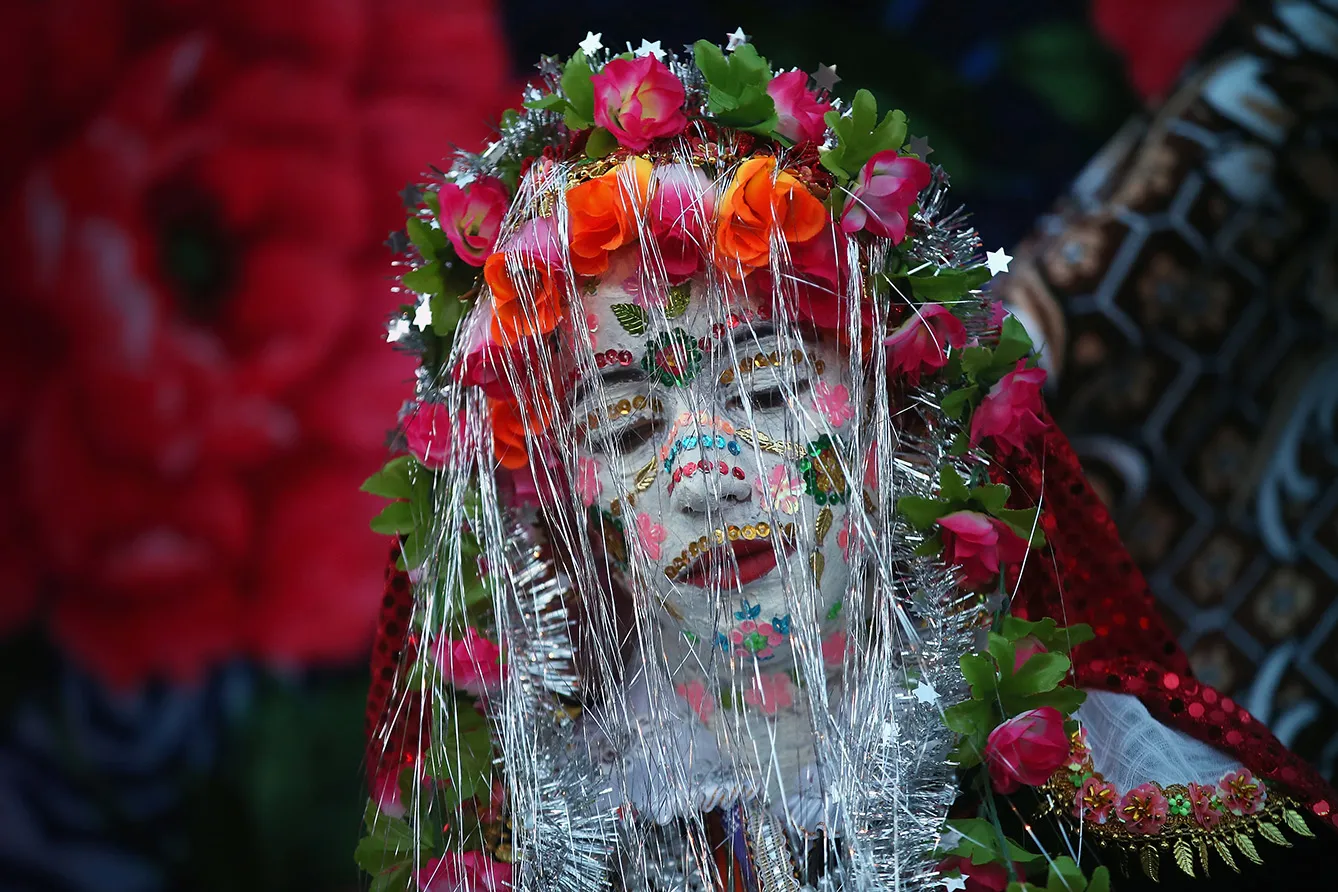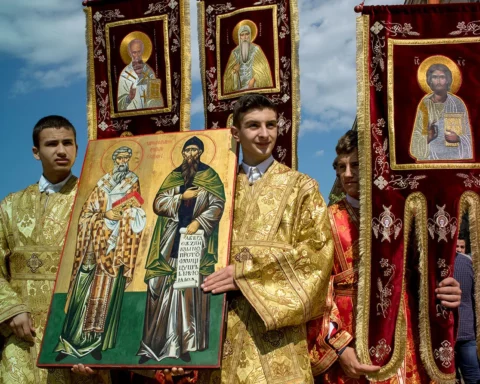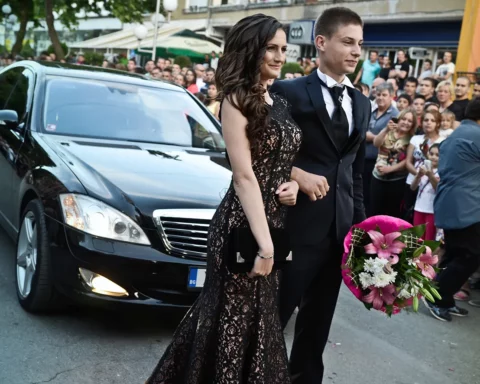The noise only means that yet another of the traditional weddings in Ribnovo is about to take place. The village, home to some 3,000 Pomaks, a Slavic population who converted to Islam during the Ottoman rule, is at the epicenter of the phenomenon known locally as “painted weddings.” All eyes are on the bride on these special two days in Ribnovo, a picturesque village located on the border between the Rhodope, Pirin, and Rila Mountains. And why wouldn’t they be, given that her meticulously painted face is essentially a painting? Would you prefer lighter make-up for the bride? Not an option – the tradition is clear on that: The bride’s face must be painted.
A multi-day celebration
The first day of the traditional Ribnovo wedding falls under the responsibility of the groom’s family, which is opening their home to countless guests. Day two is for the bride’s family to act as hosts. It is also the day the bride’s face is being painted, probably the most important part of the celebration.
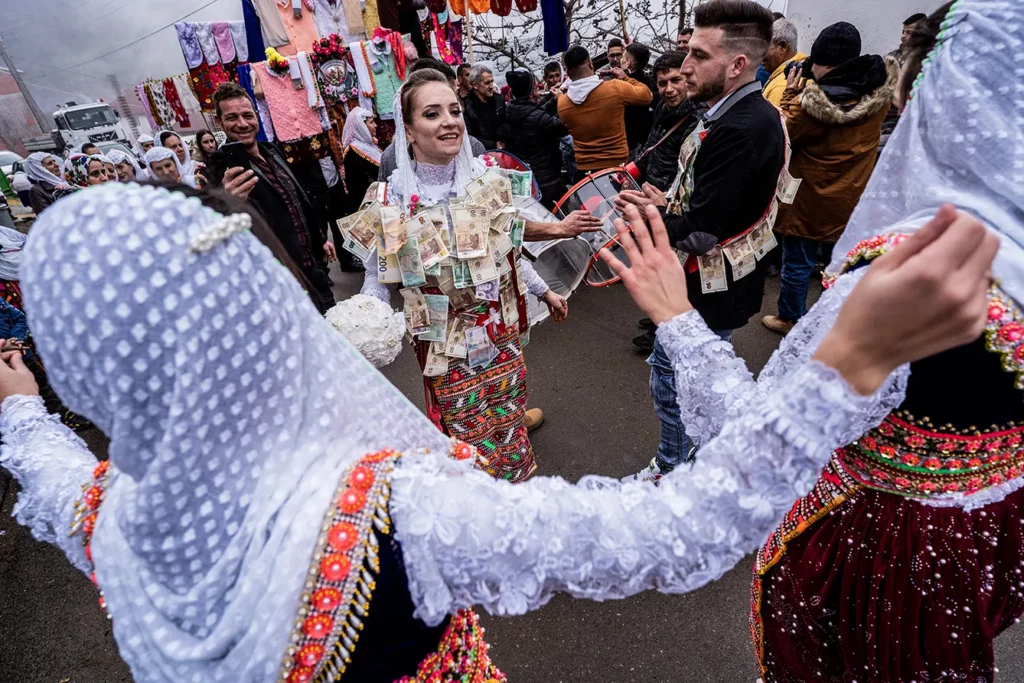
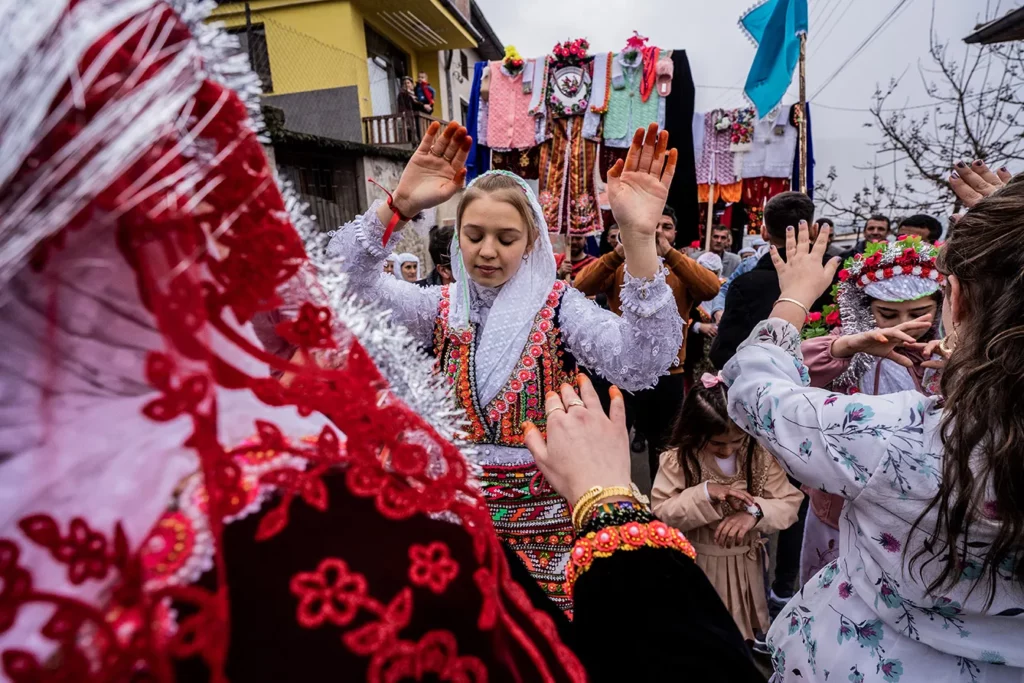
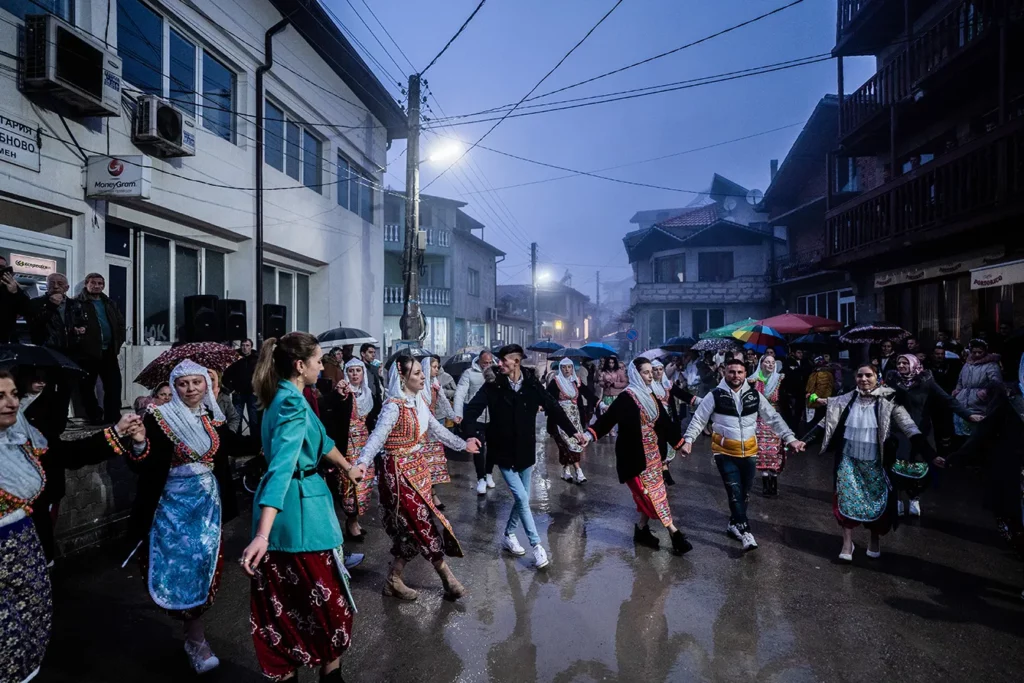
The painting ritual is performed by an experienced woman who has undergone the process as a young bride. Firstly, the bride’s entire face is thoroughly covered with white cream, a base for what comes next: sequins. The bride’s eyes are painted shut to protect her from the “evil eye.” But worry not; prior to the painting, she is consulted about her favorite colors. The painter herself has a difficult task at hand as the unwritten rule dictates that every bride, called here gelina, should be unique. The goal? It’s simple: the bride should look stunning on this very special day.
With the thick layer of white cream being the only common thing for all brides, ethnologists in Bulgaria offer a possible explanation. The white mask symbolizes the purity of the Bulgarian Muslim bride as she loses her old identity and transitions from girlhood to family life.
The wedding is all about following the rules, and one of the obligatory steps required for the bride’s dowry, everything the newlyweds might need for their new home, to be laid out neatly in front of the bride’s home for everyone to see, and let’s be honest, judge. Mixed with all this is, of course, the biggest community celebration you can imagine, with hundreds of guests dancing the traditional horo on the streets of Ribnovo.
With eyes wide shut
Once the bride’s face has been painted, she hides her face under a red veil and garlands. Hand in hand with the groom, she is led by him to her new home, still keeping her eyes shut. Keeping up with tradition, after the big celebration is over, the bride’s face is washed with milk. And in the morning, just like that, the two are now officially a family in public, too.
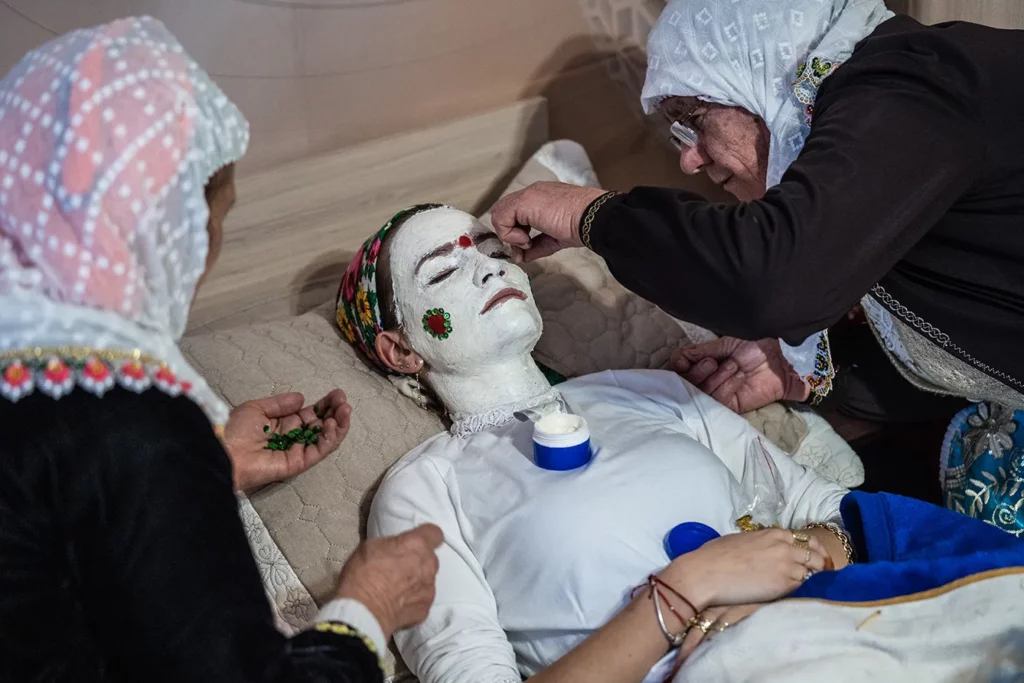
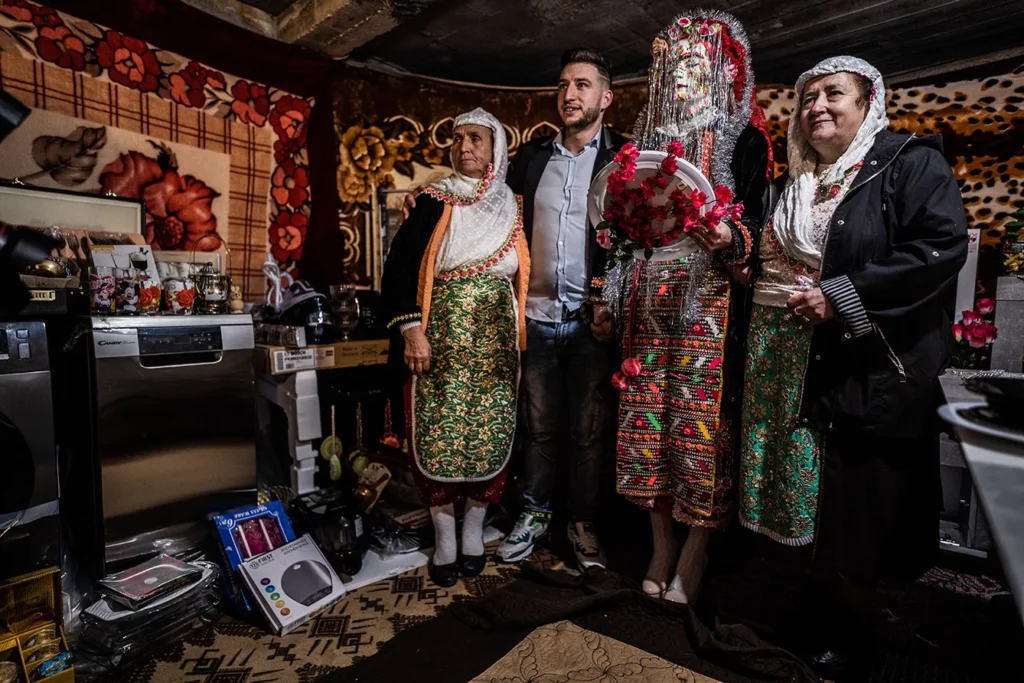
“I’ve attended such weddings. There are such analogs only with the Gorani people (a Slavic Muslim minority group) in Kosovo. I have talked to people of Ribnovo about the origin of these “white bride” weddings. They say that it is purely their own tradition, passed down for centuries from generation to generation,” historian Georgi Kulov tells 3Seas Europe.
According to data from the Municipality of Garmen, of which Ribnovo is part, some 50 traditional weddings occur annually. Interestingly enough, while banned by the Communist regime, these weddings were still taking place, only not for everyone to see. “We were doing it in secret, without much noise,” one woman involved in the painting recalls. What hasn’t changed is the time these festivities take place around here. The painted weddings are typical of the winter period of the year. The explanation is simple: Throughout the spring and summer seasons, the population is devoted to hard work in agriculture.
“The interest in these weddings is exceptional,” Ahmed Bashev, former mayor of Garmen, tells 3Seas Europe. A traditional wedding, however, is not a substitute for the mandatory civil ceremony, which can take place days or weeks in advance. But the old tradition is going strong. “No wonder these weddings are truly unique in the world,” Ahmed Bashev adds. His son, however, preferred a secular wedding in the nearby town of Gotse Delchev.


